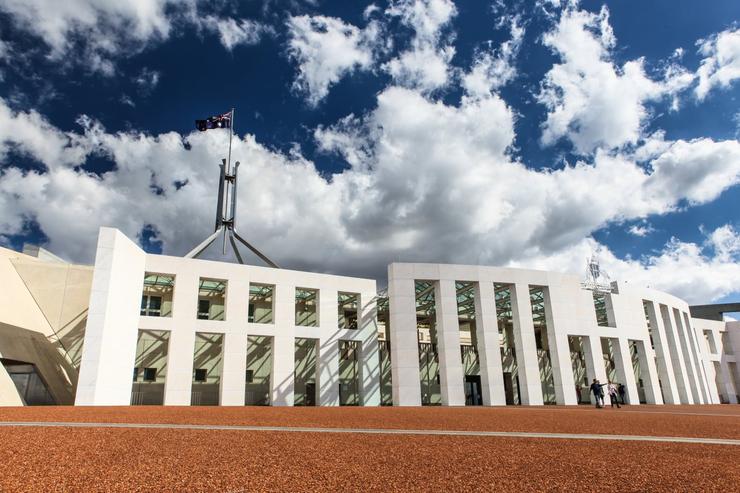 Credit: ID 86533115 © Semisatch | Dreamstime.com
Credit: ID 86533115 © Semisatch | Dreamstime.com
Australia is about to undergo a once-in-15-year rethink of the way it delivers government services at a federal level.
This rethink comes in the form of the recasting of the Department of Human Services as Services Australia, a new agency modelled on the digital-first ‘one stop shop’ that is Service NSW.
Services Australia will have a broad remit, covering welfare programmes as well as responsibility for whole-of-government ICT, including procurement policy and services.
Modern ICT must function as the backbone of how government serves the public in the digital age. Meeting customer expectations, keeping sensitive data and systems secure, and ensuring responsive, multi-channel access to services are all critical parts of the vision for modern government.
To achieve this vision, a lot of important decisions need to be made in the coming months. Good data will be crucial to ensuring we get these important decisions right.
Citizen focused
Being customer-focused is a trend both inside and outside of government. Organisations that succeed today have the customer’s interests at heart and use them to shape and tweak what they put out into the market.
Worldwide, we find our government customers looking for answers to questions like ‘how can we better serve our customers’, ‘what else can we do for the citizen’, and ‘what can we do better’.
This is largely because government spending and its linkage to citizen outcomes and services delivery is in the spotlight more than ever before.
This invites an increased level of accountability for public sector agencies to deliver on promises and strategies to make better use of government funding in a transparent manner that can stand the test of scrutiny to any Committee or Senate Estimates panel.
Government therefore finds itself with a desire and pressure to use what data it has available to understand, at a micro level, what might be hidden or otherwise undiscovered within that data.
The data is there
Australian Government agencies already hold a vast amount of data, including information about the environment, about individuals and about businesses.
This data is a valuable national resource that, if used appropriately, has the potential to grow the economy, answer complex policy questions, improve service levels and deliver immense social and economic benefits.
Analytics in government is often first driven by those curious enough to go searching for answers. These people typically start small and incrementally drive out discoveries until an executive sees the output and realises the potential of what these discoveries could do at a larger scale. The executive is then in a position to encourage and sponsor work to make this happen, to help their unit or agency see and understand data, and to explain and quantify findings.
But getting access to data in the first place can be a challenge.
Currently, data use is fragmented and sharing of data within government is often limited by a lack of authority, cultural barriers and a lack of clarity in the purposes of data use and reuse.
Access to data due to privacy and sovereignty concerns has been a barrier for the public sector, which has struggled to define strategies on security and who has access to what. The status quo had been ‘closed data’ or ‘we don’t know what to do with it’, which stymied progress.
There are also more than 500 existing data secrecy and confidentiality provisions across more than 175 different pieces of Australian Government legislation. The vast majority of these provisions prevent sharing of data, except in specific limited circumstances. The Productivity Commission noted that “while some may remain valid, they are rarely reviewed or modified. Many would no longer be fit for purpose”.
This has been a nightmare for the main groups of data users in government.
A shake-up of service delivery and whole-of-government ICT provides a rare opportunity to break down data silos and to shift the mindset - and therefore the dial - on how data is able to be used.
This is an opportunity to develop a new maturity around data use, to spawn a culture of data understanding and sharing built around appropriate controls and governance.
Bipartisan support to be better
Both sides of government have an agenda to drive better and more informed data-based decision making and to increase public confidence in the way public funds are spent.
Initiatives are underway through the proposed ‘Data Sharing & Release’ bill to create a new balance for sharing data with appropriate risk management.
This will further foster the building of a culture of analytics across government that recognises and raises the importance of data to new levels.
Modern analytics platforms are a vital part of any plan to push analytics out across an organisation. Government worldwide, including in Australia, are genuinely interested in using platforms like Tableau to make discoveries the way they want.
Like many others, we’re keen to see what the new Services Australia agency will look like and how it might uplift government-wide data analytics capabilities.
Nigel Mendonca is country manager, Australia and New Zealand at Tableau.
Join the CIO Australia group on LinkedIn. The group is open to CIOs, IT Directors, COOs, CTOs and senior IT managers.
